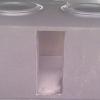-
Recently Browsing 0 members
No registered users viewing this page.
-
-
Recent Topics
-
- 1 comment
- 3 views
-
- 33 comments
- 7,886 views
-
- 3 comments
- 94 views
-
- 402 comments
- 34,948 views
-
- 6 comments
- 1,763 views
-
- 20 comments
- 497 views
-
-
-
Recent YouTube Posts



